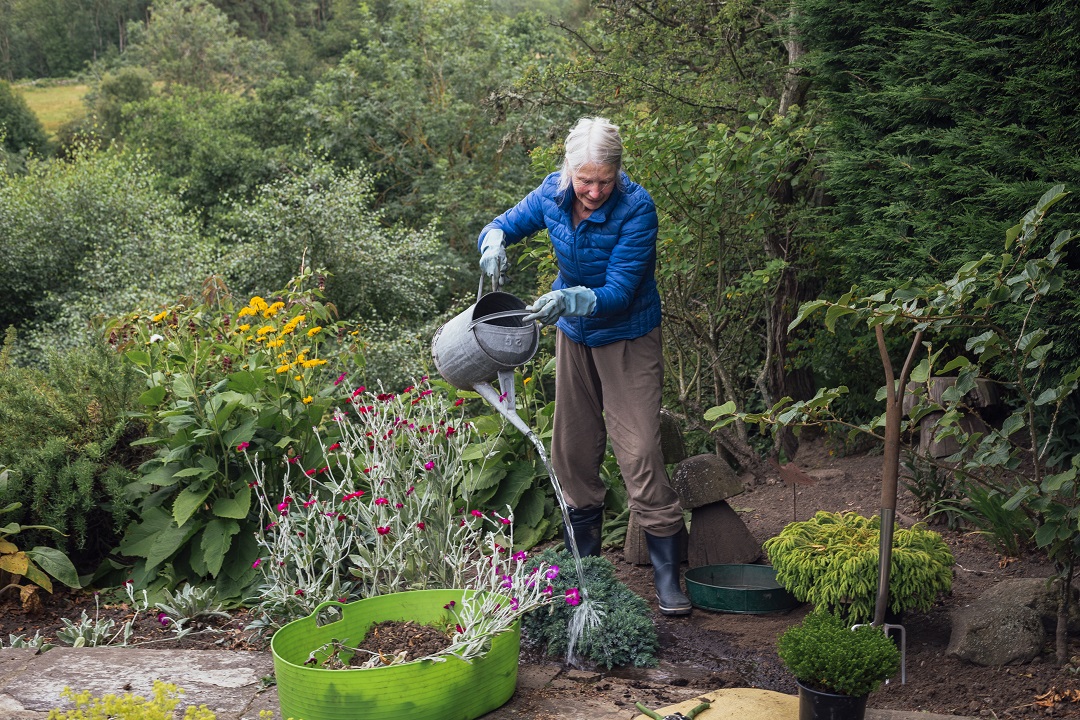Biodiversity is one of life’s biggest ideas — and the most challenging focus I’ve taken up in my 30-plus years of enviro-advocacy. Amid the mass of our own species’ pressing concerns, how to get people to care about, to understand the wild complexity of all life on Earth?
Since 2012, around our bi-state area, a diverse human network has been doing just this. BiodiverseCity St. Louis (BDV-STL) is a community-wide initiative, powered by a coalition of over 100 partners, to promote, protect, and plan for biodiversity at home, at school, at work, and throughout the greater St. Louis eco-region.
Missouri Botanical Garden serves as organizing hub of this great wheel of collaborative action. The BDV-STL Leadership Team currently includes professionals from the Saint Louis Zoo, Great Rivers Greenway, Open Space Council, Forest ReLEAF of Missouri, Missouri Department of Conservation, and East-West Gateway Council of Governments’ OneSTL, our regional sustainability plan, along with Garden staff.
OneSTL convened a summit in 2017 to set implementation targets in six focus areas of this plan. Leaders of BDV-STL stepped up to include biodiversity alongside more familiar public enviro-concerns like recycling and energy. The resulting target — called BiomeSTL, short for Biodiversity of Metro St. Louis — includes an under-construction atlas of online nature data intended for use by planners and land-use decision makers region-wide. We can manage what we measure, whether kilowatts or trees. Data is essential to rally evaluation of nature’s needs as well as our own.
Two community actions coming this spring invite people of all ages, abilities, and interests to contribute to this movement while enjoying nature.
City Nature Challenge
From April 30 to May 3 this year, adults and youth with smartphones will explore and document biodiversity, doing science in cities worldwide. Our fun and useful tool? The mobile app iNaturalist, which identifies plants and animals from the photos and audio/visual files you upload.
City Nature Challenge was launched in 2016 by Bay area-based California Academy of Sciences, developer of iNaturalist, and the Natural History Museum of Los Angeles County. These two science giants engaged their communities in a friendly contest so successful it went global by 2018, when our St. Louis Metro Area joined. COVID-19 restrictions changed 2020’s competition format to a science celebration that 244 cities enjoyed and will repeat.
City Nature Challenge expands on the process of a BioBlitz, with “ordinary people” taking the lead, sighting critters and plants in parks, neighborhood spaces, on workplace and school grounds, and in our own yards. Species will be identified by iNaturalist, often with some ecological context. Scientists in multiple disciplines weigh in toward Research Grade observations when the app detects a species that is rare, threatened, endangered, invasive, or otherwise biologically significant.
Inspired by City Nature Challenge, BDV-STL gets additional benefit from the flexible GPS setup capacity of iNaturalist. Every observation uploaded to this app that originates, year-round, from the St. Louis “area of statistical significance” logs data that will add to the BiomeSTL atlas. This area includes communities in eight Illinois counties, six counties in Missouri, and the City of St. Louis.
City Nature Challenge registration opens in March. BDV-STL leaders will give virtual iNaturalist trainings.
Honeysuckle Sweep
Through the entire month of March, and again through November, BDV-STL partners coordinate events to remove bush honeysuckle, one of our most invasive plant species, from public lands. Alongside everything else, these volunteer efforts were curtailed in 2020, though some COVID-safe volunteer work went on and will occur on limited-access dates this spring.

BiodiverseCity St. Louis Honeysuckle Sweep in Chesterfield.
Honeysuckle Sweep began in 2016 to coordinate and expand on existing efforts of multiple groups to tackle this intensive invader, to raise awareness of bush honeysuckle issues through concentrated cycles of events, to boost public participation in volunteer events, and to increase the range of removal efforts.
As volunteers join the pros in “Honeysuckle Hacks,” people learn how to effectively eradicate this woody bush and why the work is important to carry home to our neighborhoods, where honeysuckle privacy hedges are growing plant deserts. Sites where bush honeysuckle has been removed are increasingly also being restored with native plants, giving project helpers hands-on biodiversity connections.
Rebranding Community Science
BDV-STL supports a movement in environmental education circles to rebrand public participation in scientific research from Citizen Science with the purposefully inclusive term Community Science. Leadership in this change is arising from Sequoia and Kings Canyon National Parks and National Park Service partners including Great Smoky Mountains Institute at Tremont.
The process by any name is hugely useful for educators and scientists. Research begins with posing questions for investigation and includes hypothesizing, designing methods, and collecting and analyzing data. It culminates in sharing research findings with other people. Students, teachers, and other community members can be involved with one or more of these steps.
The word “citizen” coupled with science does not note the nationality of those who observe, but environmental educators acknowledge the term’s limitation. Active at the heart of this kind of collaboration is the network of people empowered to use science, gathering data toward insight into the ecosystems in which we live, regardless of citizenship or country of origin. Just as important: involvement with local, national, and international research connects each participant to a wider community, all working together to understand our Earth.
Author: Jean Ponzi is a contributor to Terrain Magazine.


Leave A Comment